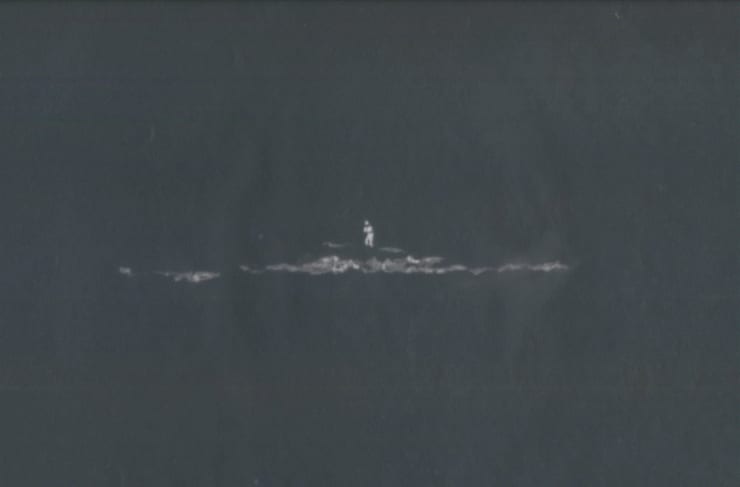Zlatko Kopljar and Luc Tuymans: Exhibition Mercy curated by Ory Dessau
Mercy
Zlatko Kopljar and Luc Tuymans
Curated by Ory Dessau
Galerija Vartai presents Mercy, a joint exhibition by Zlatko Kopljar and Luc Tuymans, arranged as a sequence of shared and separate displays highlighting the iconoclasm and analytical complexity of these two artists. The exhibition juxtaposes Tuymans’ recent work in animation, where the influential painter has continuously expanded the conceptual scope of his practice, with a selection of works created by Kopljar throughout the last decades, combining performance, sculpture, video, and experimental cinema.
The title Mercy is a plea. It presupposes an urgent need and a fundamental lack, situating the exhibition as an effect of loss and detachment manifested by Kopljar’s K20 Empty (2015) and Tuymans’ Monkeys (2021), which occupy the exhibition’s first room.
K20 Empty consists of two concrete cast miniatures depicting the buildings of New York’s Museum of Modern Art (MoMA) and London’s Tate Modern. Stuffing the two buildings in concrete to conceal their inner spaces and the art they are expected to display, K20 Empty modifies the museum, transforming it from a site of display into an anonymous material, a depleted code. In the work, the museums reappear as souvenirs, reminders of history. By miniaturizing the two museums, the work signifies their future as past, an image of both commemoration and annihilation.
On the wall in front of the entrance hangs a cluster of Tuymans’ drawings used for his animation film Monkeys. In the film, a mechanical toy monkey holding cymbals moves back and forth within a flickering dark space before being consumed by black fire. The disintegration of Monkeys into its single frames follows the logic of Tuymans’ painterly practice, which dissociates film stills and photographic records to manually produce superfluous, exhausted images, whose diluted chromatics and congealed texture mark them as obsolete, a mute appearance of an irretrievable time and place. Tuymans’ interest in fragmentary, obscured, drained images stems from his radical notion of historical representation, and, in particular, from his approach towards the subject matter of the Second World War, as already demonstrated in several early, seminal paintings informed by absence, void, and indistinctiveness that characterizes the catastrophe by ways of negation, critically emphasizing its total un-representability and the inadequacy of visual evidence.
The tragic consequences of the Second World War are evoked in the exhibition by Kopljar’s projection K15 (2012). K15 is a reenactment of Willy Brandt’s 1970 historic kneeling down in front of the monument honoring the victims in the Warsaw Ghetto killed by the Nazis. The role of Brandt, the chancellor of the Federal Republic of Germany from 1969 to 1974, is played by Kopljar himself, who is seen dressed in the white luminescent suit familiar from his film performances. The original scenery was transferred into a night ambiance, lending the reenacted event a sense of dream and fantasy. In relation to the war in Ukraine taking place not so far from Lithuania and considering the history Lithuania shares with Russia and Ukraine, K15’s reflection on Brandt’s act of repentance becomes a grim account of present-day reality.
Projected onto the back wall of the exhibition’s last room, Tuymans’ animation Surrender (2017) can be described as a short war film. Framing a night scene viewed from a distance, it shows a naval warrior coming out of the sea waving a white flag. Additional warriors then join him and shortly after they all are taken down by gunshots of an unseen source outside the frame. Surrender is based on a 2014 triptych by Tuymans that employs stills from A Twist of Sand, a 1968 film about a former British naval officer managing a business of smuggling goods from Africa. Although its source material is rooted in British colonialism, Surrender enshrouds the identity of the combating rivals and the reasons for their conflict, pointing to the relativity and inconclusiveness of the projected images, and widely speaking, to the manipulative potential of images in information warfare.
Exhibition supported by:
.png)
Roma Puišienė, Rasa Juodviršienė
 ,
,  ,
,
Partner: Lietuvos nacionalinis dailės muziejus

Gallery patrons: Renata and Rolandas Valiūnas
Gallery supported by: Vilma Dagilienė, Romas Kinka

![]()
![]()

![]()






























